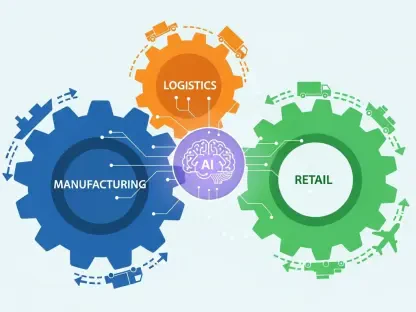In today’s rapidly advancing technological landscape, artificial intelligence (AI) stands as a beacon of transformative potential, promising to revolutionize industries with unprecedented efficiency and insight. However, this promise is shadowed by significant risks—data breaches, ethical missteps, and regulatory non-compliance—that can derail even the most ambitious enterprises. The challenge lies in balancing AI’s innovative power with the need for safety and accountability. This article explores the pivotal role of AI security governance, a disciplined approach that converts the inherent chaos of cutting-edge technology into structured, responsible progress. By implementing robust frameworks, organizations can mitigate vulnerabilities while unlocking AI’s full potential. Far from being a restrictive force, governance serves as a catalyst, ensuring that innovation aligns with societal values and business objectives. This discussion delves into how such oversight shapes a secure path forward, safeguarding trust and fostering sustainable growth in an AI-driven world.
Taming the Unpredictability of AI
The dynamic nature of AI, particularly with sophisticated systems like large language models, presents a double-edged sword for enterprises. These technologies process vast datasets at lightning speed, driving innovation but also exposing organizations to risks like data poisoning, privacy violations, and adversarial attacks. Without a guiding structure, the unpredictability of AI can lead to severe consequences, undermining both operational integrity and stakeholder confidence. AI security governance steps in as a vital mechanism to bring order to this complexity. It establishes clear policies and controls that span the entire lifecycle of AI development and deployment. By aligning strategic goals with acceptable risk levels, governance ensures that technological advancements do not outpace an organization’s ability to manage them, creating a foundation where innovation can flourish securely.
Beyond the technical realm, the influence of AI permeates every facet of an organization, from employee recruitment to brand perception. This broad impact necessitates an enterprise-wide approach to governance, rather than limiting it to IT or cybersecurity teams. Cross-functional collaboration becomes essential, ensuring comprehensive oversight and eliminating blind spots. Tools like the RASCI matrix—defining who is Responsible, Accountable, Supportive, Consulted, and Informed—help clarify roles across departments. This integrative strategy ties AI governance into the larger fabric of corporate risk management, making it a collective endeavor. Such a holistic perspective not only addresses immediate vulnerabilities but also builds resilience against future challenges, reinforcing the idea that responsible innovation requires shared commitment across all levels of an organization.
Crafting a Robust Governance Framework
Building an effective AI security governance framework demands a multi-layered strategy that addresses diverse risks comprehensively. This approach begins with alignment to globally recognized standards like ISO 27001 and the NIST AI Risk Management Framework, ensuring a baseline of best practices. Compliance with legal mandates, such as the General Data Protection Regulation (GDPR) and the California Consumer Privacy Act (CCPA), further fortifies the framework against regulatory pitfalls. Technical solutions, including real-time monitoring systems and anomaly detection tools, provide critical safeguards against operational threats. However, governance extends beyond rules and technology—it requires cultivating a culture of accountability where ethical considerations and transparency are non-negotiable. Training programs for employees play a pivotal role, embedding governance principles into daily operations and decision-making processes, thus creating a workforce that views oversight as an enabler rather than a barrier.
Another critical aspect lies in selecting the most suitable governance model for an organization’s unique needs. Options range from integrating AI oversight into existing cybersecurity structures to developing a standalone system tailored specifically for AI risks, or adopting a hybrid model that combines elements of both. Each path carries distinct advantages and challenges, but the hybrid approach often emerges as a pragmatic choice. It allows for immediate focus on AI-specific vulnerabilities while setting the stage for eventual integration into broader risk management systems. This adaptability proves invaluable for organizations navigating the uncertain terrain of AI adoption, providing a balance between urgent action and long-term planning. By tailoring governance to contextual demands, businesses can address current threats without losing sight of future scalability, ensuring that their frameworks remain relevant as technology evolves.
Advancing Through Governance Maturity
AI security governance is not a static solution but a progressive journey tailored to an organization’s capacity and readiness. A maturity model offers a structured path, starting from basic, reactive measures and advancing toward sophisticated, fully integrated systems. Often described as a “crawl, walk, run” progression, this approach allows businesses to develop governance at a sustainable pace, avoiding the pitfalls of overreaching too soon. Early stages might focus on addressing immediate risks with ad hoc policies, while later stages embed automated processes and predictive analytics into enterprise-wide risk strategies. This gradual evolution ensures that governance grows in tandem with AI’s rapid advancements, providing a realistic roadmap for organizations to enhance their oversight capabilities without straining resources or disrupting operations.
Measurement and adaptability form the backbone of this maturing process, enabling continuous improvement in governance efforts. Quantitative metrics, such as compliance percentages and incident response durations, offer concrete benchmarks to evaluate effectiveness. Qualitative indicators, like the level of transparency in AI-driven decisions, provide deeper insights into trust and ethical alignment. Together, these feedback mechanisms create a dynamic system where strategies can be refined in response to emerging threats and technological shifts. By prioritizing such metrics, organizations maintain a clear focus on responsible innovation, ensuring that governance not only mitigates risks but also amplifies the value derived from AI. This iterative approach underscores the importance of viewing governance as an evolving discipline, one that must remain agile to keep pace with an ever-changing digital landscape.
Shaping a Secure Future for AI Innovation
Reflecting on the journey of AI security governance, it’s evident that past efforts laid a strong foundation for transforming unpredictable technology into a reliable asset. Organizations that embraced structured oversight tackled risks like data breaches and ethical lapses head-on, fostering trust and ensuring compliance with stringent standards. The collaborative, multi-layered strategies adopted proved instrumental in aligning innovation with responsibility, while maturity models guided steady progress across diverse industries. Looking ahead, the focus should shift to refining these frameworks with advanced metrics and adaptive tools, ensuring they remain robust against new challenges. Businesses are encouraged to invest in continuous training and hybrid models that balance immediate needs with long-term integration. By prioritizing transparency and cross-functional accountability, the path forward can sustain AI’s transformative impact, turning potential disorder into deliberate, impactful progress for years to come.









